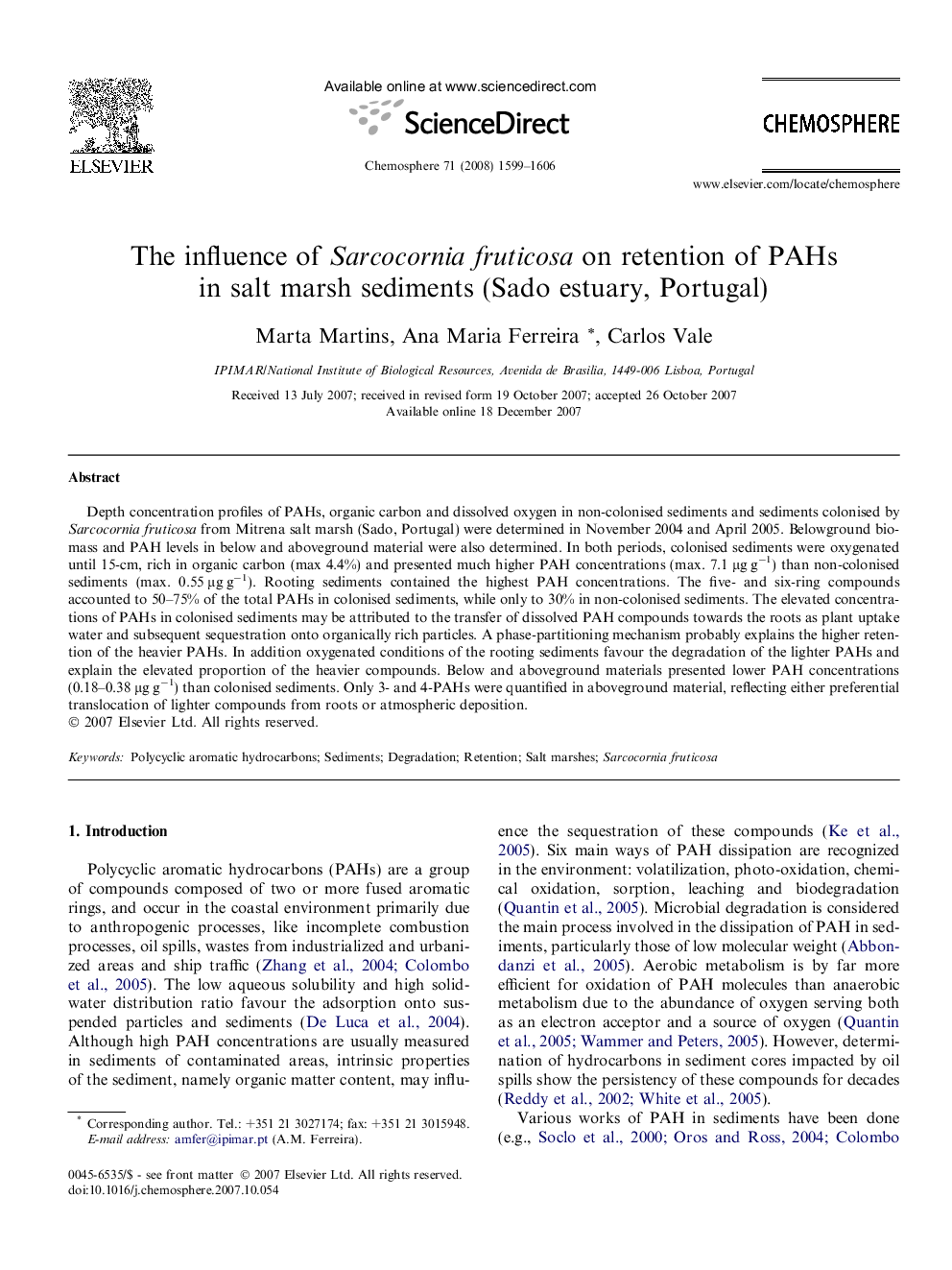| Article ID | Journal | Published Year | Pages | File Type |
|---|---|---|---|---|
| 4414511 | Chemosphere | 2008 | 8 Pages |
Depth concentration profiles of PAHs, organic carbon and dissolved oxygen in non-colonised sediments and sediments colonised by Sarcocornia fruticosa from Mitrena salt marsh (Sado, Portugal) were determined in November 2004 and April 2005. Belowground biomass and PAH levels in below and aboveground material were also determined. In both periods, colonised sediments were oxygenated until 15-cm, rich in organic carbon (max 4.4%) and presented much higher PAH concentrations (max. 7.1 μg g−1) than non-colonised sediments (max. 0.55 μg g−1). Rooting sediments contained the highest PAH concentrations. The five- and six-ring compounds accounted to 50–75% of the total PAHs in colonised sediments, while only to 30% in non-colonised sediments. The elevated concentrations of PAHs in colonised sediments may be attributed to the transfer of dissolved PAH compounds towards the roots as plant uptake water and subsequent sequestration onto organically rich particles. A phase-partitioning mechanism probably explains the higher retention of the heavier PAHs. In addition oxygenated conditions of the rooting sediments favour the degradation of the lighter PAHs and explain the elevated proportion of the heavier compounds. Below and aboveground materials presented lower PAH concentrations (0.18–0.38 μg g−1) than colonised sediments. Only 3- and 4-PAHs were quantified in aboveground material, reflecting either preferential translocation of lighter compounds from roots or atmospheric deposition.
